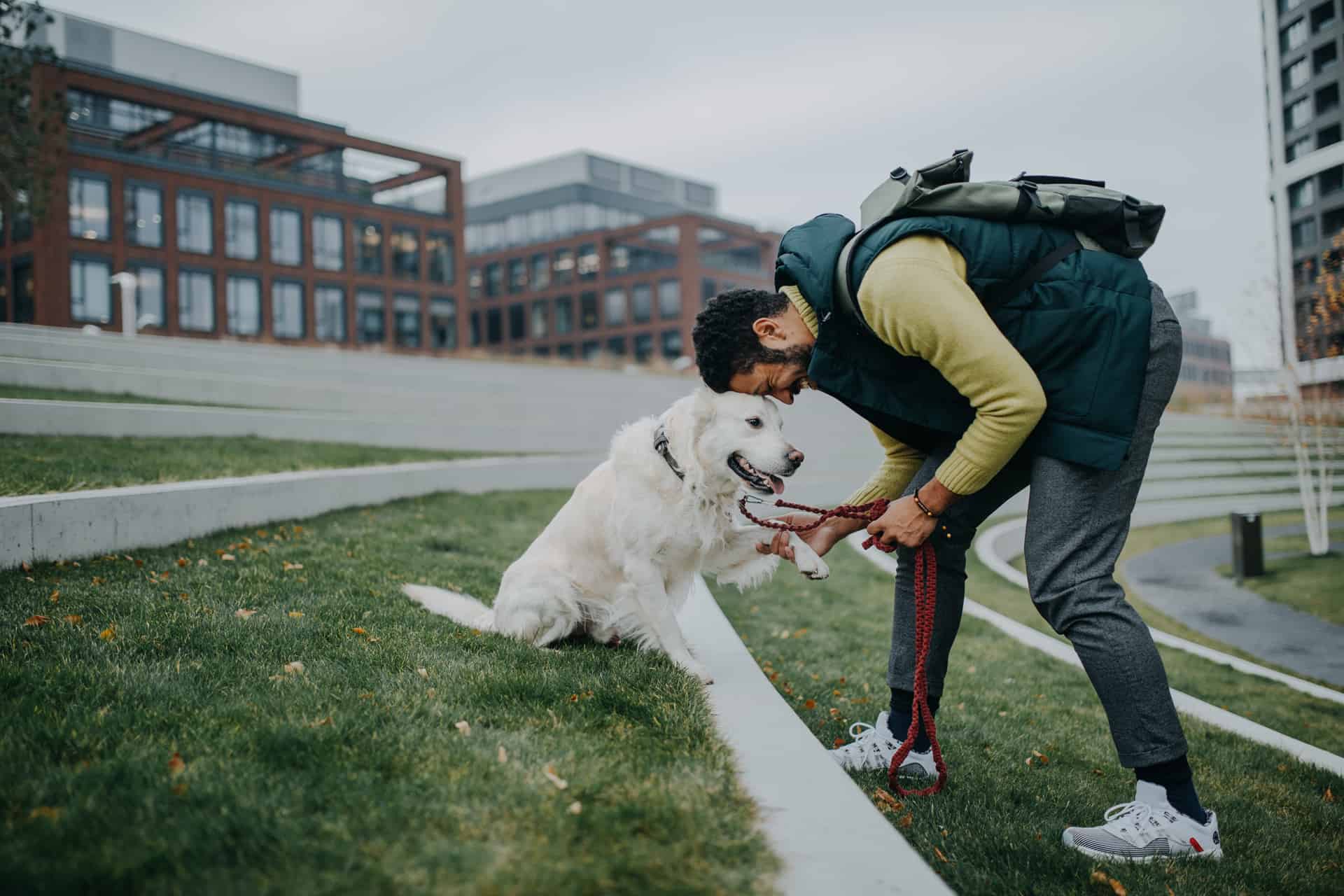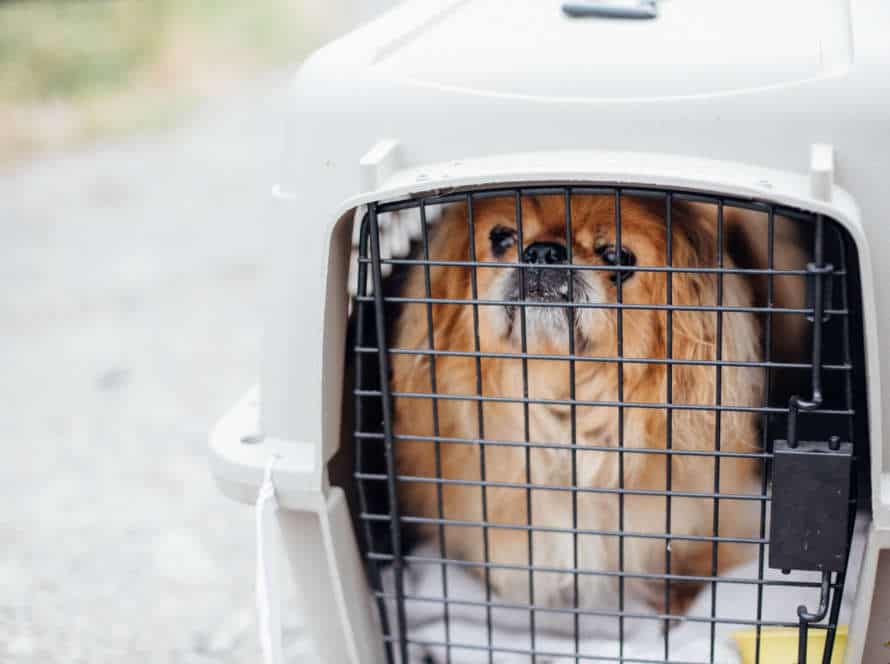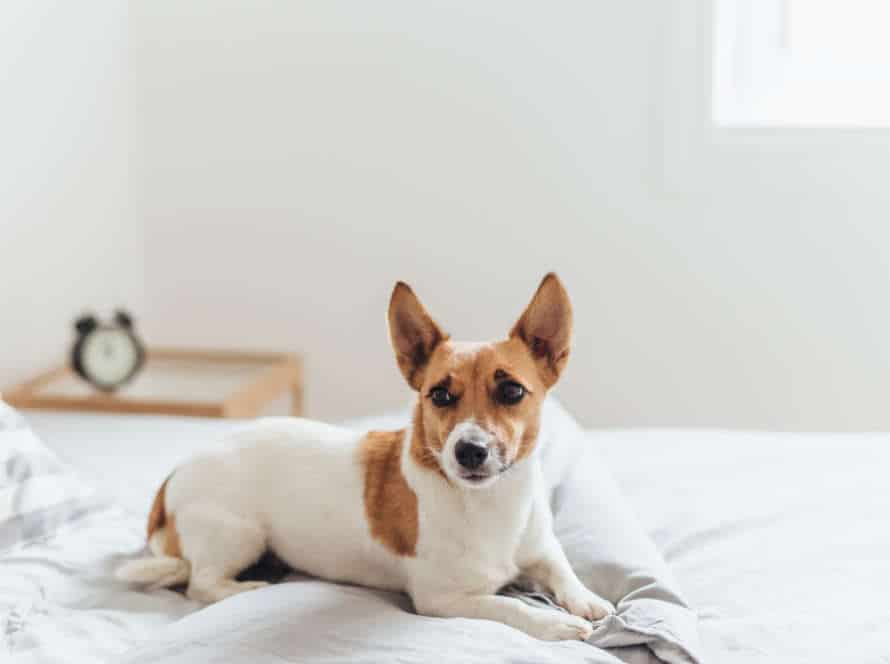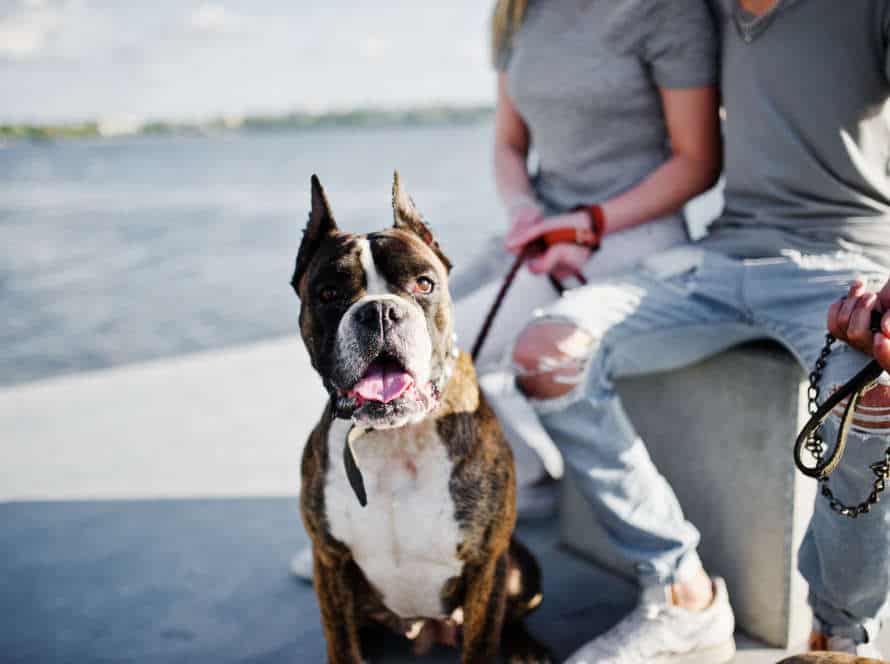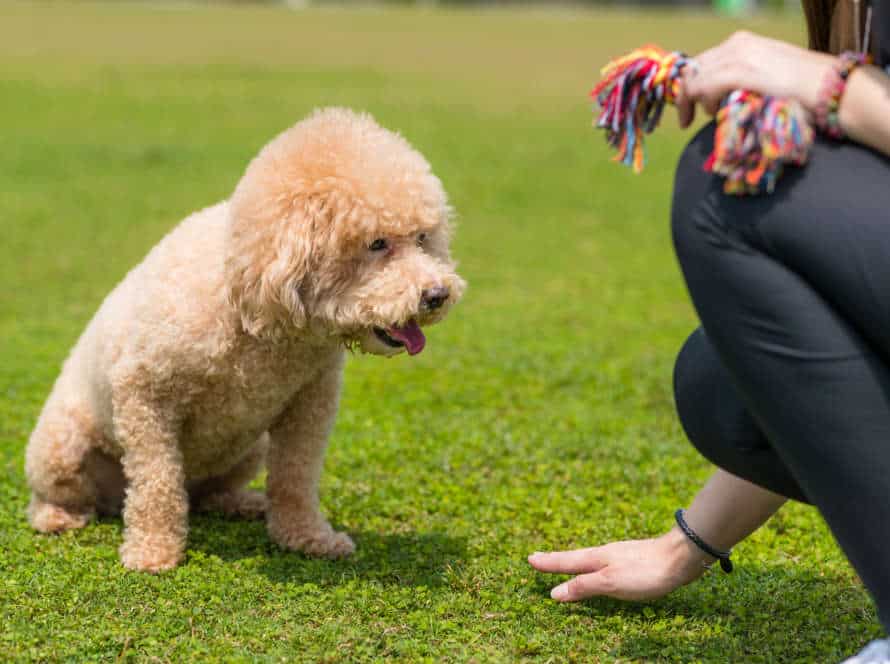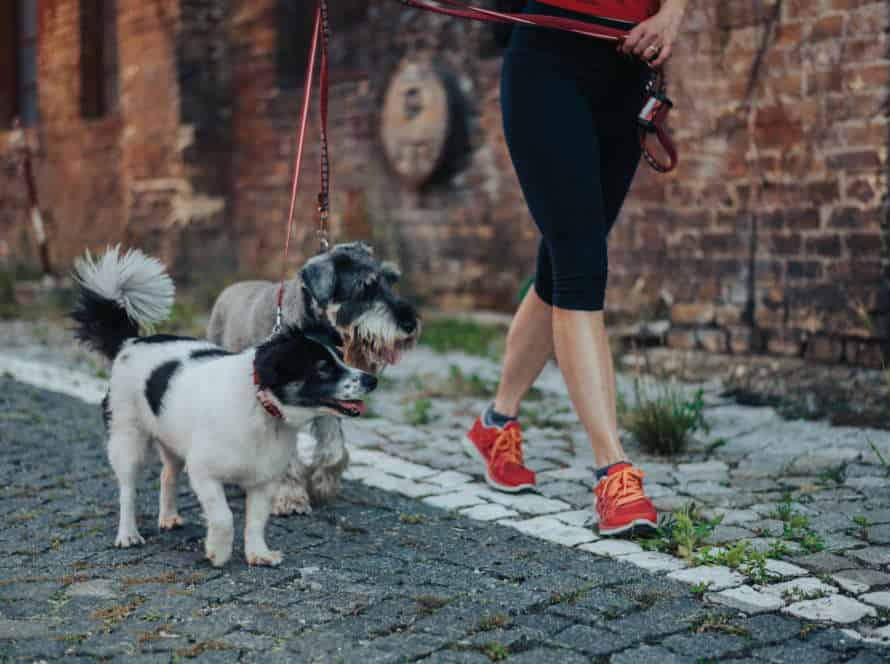How to Stop Your Dog from Biting the Leash: A Step-by-Step Guide
Leash biting can be a problem for many owners. But, with some training and patience, you can teach your pup to stop. Here’s how:
- Give them a chew toy, something else to focus on.
- If they start biting the leash, stop walking. Wait for them to stop.
- Once they stop, continue walking and reward them with a treat.
- Do this each time you walk them, rewarding them when they stop biting the leash.
- If they still bite or chew the leash, try a different type like a chain leash. It’s less likely to be bitten.
With patience and positive reinforcement, your dog will learn to stop biting the leash and walk calmly by your side.
Understanding why dogs bite the leash
If your pup is biting or tugging the leash, it’s important to figure out why. The cause could be anything from breed to personality. It might even be a lack of mental stimulation or exercise. Knowing why your dog is acting this way is the first step to solving the problem.
Teething and puppy biting behavior
Puppy biting is typical, as it’s part of their teething. But, leash biting can be troublesome and risky for owners. Here are a few reasons why pups bite the leash:
- Teething
- Attention-seeking
- Playfulness
- Frustration
To stop your puppy from biting the leash:
- Give an alternate
- Use positive reinforcement
- Stop and stand still
- Get professional help
Pro tip: Have patience and be consistent. With effort, your pup can learn not to bite the leash and have good walking habits.
Fear and anxiety
Dogs biting the leash is a common behavior. This is usually due to fear and anxiety. Knowing this is essential to assist your pup. Here are some possible causes:
- Fear & Anxiety – Separation, strange environments, or other dogs. Biting and playing with the leash can give comfort and security.
- Over-excitement – High energy during walks or playtime.
- Seeking Attention – To get their owner’s attention or to interact when feeling bored or ignored.
To prevent leash biting, try these steps:
- Distract your pup with treats or toys.
- Teach them ‘leave it’ or ‘drop it’.
- Use positive reinforcement like rewards and compliments.
- Exercise and mental stimulation can reduce anxiety and improve behavior.
Playtime and excitement
Dogs may bite their leash out of playfulness or excitement. If left unaddressed, this could be a safety hazard. So, let’s figure out how to stop it!
- Firstly, train your pup the “leave it” command and practice regularly.
- Secondly, spray taste deterrent on the leash to discourage chewing.
- Thirdly, consider switching to a harness or head collar.
- Fourthly, bring a toy or treat to distract them.
- Lastly, use positive reinforcement to reward good behaviour.
With patience and consistency, we can help our dog break the habit of biting the leash and make walks a pleasant experience!
Methods to stop your dog from biting the leash
Frustrating and dangerous times arise when your pup bites the leash during a walk. To nip this bad habit in the bud, try these tips. Here’s a guide to help you stop your dog from mouthing the lead:
- Step One
- Step Two
- Step Three
- and so on!
Teaching your dog the “Leave it” command
Teaching your pup the “Leave it” command can help stop their leash-biting! Here’s how:
- Hold the leash in one hand, and a treat in the other.
- Say “Leave it” and cover the treat with your hand.
- Wait until your pup stops trying to grab the treat, even if just for a moment.
- Praise them and give them a different treat from your other hand.
- Repeat, increasing the time they must wait before getting the treat.
- Practice with various objects and settings until they can resist distractions and obey the command.
Keep in mind: consistency and positive reinforcement are crucial in teaching your dog new commands.
Using a different type of leash or collar
If your pup has taken to biting the leash, trying a different leash or collar may help. Here are a few ideas:
- Chain leash: Dogs may bite less on metal.
- Head halter: It gives better control and makes it tricky for them to reach the leash.
- No-pull harness: It stops dogs from pulling and biting.
It’s essential to make any changes gradually, so your dog can get used to it. Plus, it’s also important to tackle the cause of the leash-biting, like not enough exercise or attention.
Redirecting their attention to a toy or treat
Many dogs bite their leash during walks; this is dangerous and can be annoying for owners. Redirecting the pup’s attention to a toy or a treat is one way to stop them. Follow these steps:
- Carry a chew toy or snack on walks.
- As soon as your dog starts biting the leash, pull it gently to get their attention and give them the toy/treat.
- Praise them if they chew/eat it instead of the leash.
- Repeat.
This method can teach dogs that leash biting is not okay and reward them for good behavior. With patience, this can help chew-free walks.
Pro tip: Exercise and playtime can help reduce energy and boredom during walks, so try to give your pup enough of both.
Training exercises for preventing leash biting
Is your pup chomping on the leash? This can be a real bother for owners. But, there are some basic instructions which can help in preventing the conduct. Before getting into the details, let’s take a look at why this behavior happens and some advice to keep in mind when teaching your dog.
Teaching your dog to walk beside you
Teaching your pup to walk nicely on a leash is a must! Here are three exercises to prevent leash biting and help them learn to stay beside you:
- Stop-and-Start: Begin walking with your doggo, and when they start pulling or biting the leash, stop. Wait for them to calm down and start again. Keep repeating this until they understand how to walk without biting or pulling.
- Change of Direction: As you go, alter your direction often to keep your canine focused on you. Give them a treat each time you change direction for good behaviour!
- Treat Lure: Keep a treat in your hand and let them smell it. Start walking and keep them focused on the treat. Eventually, they’ll learn that walking calmly next to you will get them treats!
Desensitizing your dog to the leash
Desensitizing your pup to the leash is key for successful leash training and to prevent leash biting. Here are a few tips:
- Introduce the leash little by little. Show the leash and give treats. Then, attach it to their collar or harness and let them drag it around the house for a few minutes each day.
- Offer rewards when your dog is comfortable. Start walking, giving treats or praise for calm behavior.
- Stop the biting. If they start to bite, stand still and wait until they calm down. Give them a toy or treat to redirect attention.
- Repeat daily. Consistency is key!
Be patient and positive during the training process.
Using positive reinforcement to encourage good behavior
Positive reinforcement is a great way to teach your pooch right from wrong – like stopping leash biting. Try these steps:
- Give your pup something yummy – like chicken or cheese – they’ll love.
- Hold the treat in your hand and let them sniff and lick it.
- Praise and reward them when they don’t bite the leash.
- Keep repeating the process, and slowly increase the time before they get the treat.
- Be consistent and patient with the training. With practice, your pup will learn to respond to positive reinforcement and stop leash biting.
Pro Tip: If your dog bites the leash a lot, bring a tough chew toy or dog bone on your walk for them to play with.
Additional tips for preventing leash biting
Breaking a leash biting habit can be tough. But, there are tips to help prevent it. Redirecting your dog’s focus is key. Specialized leashes, harnesses and collars can also help make walks more pleasant. Here are some of these tips in detail:
Avoiding punishment or harsh discipline
To stop your doggo from biting the leash, avoid punishments or harsh discipline. Try these tips instead:
- Provide an alternate chew toy like a rope toy or dental chew.
- Increase exercise & playtime. This will tire them out & reduce their energy.
- Use positive reinforcement. Give treats or praise when they show calm behavior on the leash.
- Try a different type of leash if they keep biting.
Remember: Leash biting can be a symptom of anxiety or lack of training. Get advice from a professional dog trainer or behaviorist to address the cause.
Taking frequent breaks during walks
Taking regular breaks when walking your pup is vital to avoiding leash biting. Breaking the walk into smaller bits can help your furry friend expend energy and stop them from getting too excited, and thus biting the leash.
Here are more tips to help:
- Give your pup lots of exercise before the walk to lower their energy level.
- Use a no-pull harness to stop them from pulling and biting the leash.
- Reward good behavior with treats or compliments.
- Sign up for a dog training class to work on obedience and leash respect.
With these strategies, you and your pup can have calm walks together!
Seeking professional help if your dog’s behavior persists.
If your dog still bites the leash, it’s best to ask a dog trainer or behaviorist for help. They can tell why the pup does this and give advice.
Before consulting an expert, try these tips:
- Give your pup plenty of exercise and mental challenges.
- Try a thicker and stronger leash.
- Use a head halter or front-clip harness instead of a collar.
- Reward good behavior and distract them with treats or toys.
- Most of all, be patient and consistent. With time and practice, your pup will stop biting the leash.
Frequently Asked Questions
Q: Why does my dog bite the leash?
A: There can be various reasons why your dog might be biting the leash, such as boredom, anxiety, excitement, or lack of exercise. It’s essential to identify what’s causing this behavior to address it properly.
Q: Is biting the leash a serious problem?
A: Biting the leash can sometimes lead to more severe behavioral issues if left unaddressed. It can also be dangerous for your dog if they end up ingesting parts of the leash or if they pull so hard that they hurt their neck.
Q: How do I stop my dog from biting the leash?
A: The first step is to ensure that your dog gets enough mental and physical exercise. You can also try using positive reinforcement techniques, such as offering treats or toys as an alternative distraction. Consistency is key in training your dog to stop biting the leash.
Q: What kind of leash should I use to prevent my dog from biting?
A: Using a sturdy and durable leash made of non-toxic materials, such as leather or nylon, can help prevent your dog from biting and ingesting bits of the leash. Avoid using retractable leashes as they can be difficult to control.
Q: Should I punish my dog for biting the leash?
A: No, punishment can often worsen the problem and make your dog more anxious or stressed. Instead, focus on redirecting the behavior using positive reinforcement and consistent training.
Q: What if I’ve tried everything, but my dog still bites the leash?
A: If your dog’s behavior doesn’t improve after trying different training techniques, you may need to seek professional help from a dog trainer or animal behaviorist for a more personalized approach.

